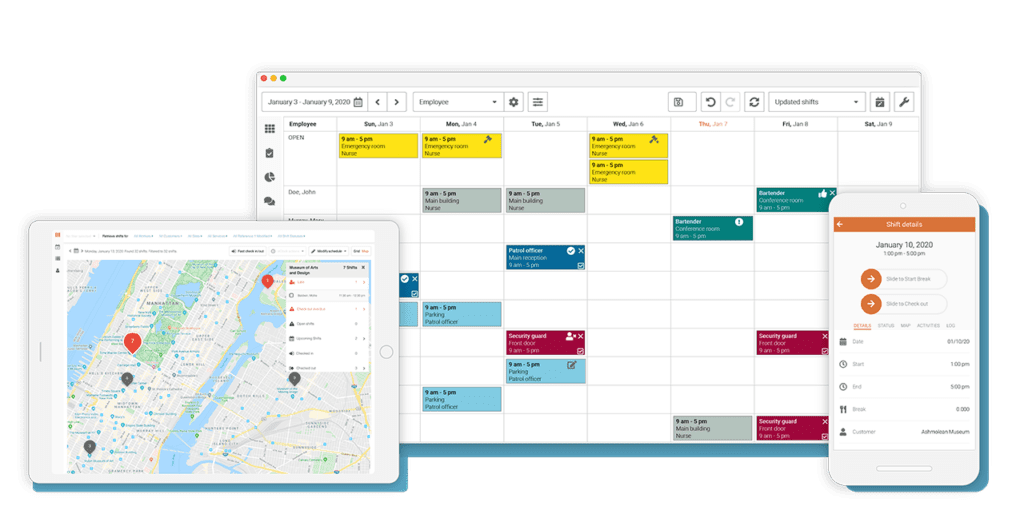Manufacturing is the cornerstone of our modern economy. It consists of the production of goods through labor, machinery, and tools. In Canada, manufacturing accounts for over 10% of the country’s gross domestic product (GDP) yearly. This equates to over $354 billion of merchandise exports. It helps to provide 1.7 million full-time and well-paying jobs, which gives a clear indication of the value it brings. However, the very nature of these positions means they’re not often worked with ease, and can result in employee burnout.
Employee burnout is an issue across many professional fields. Burnout can be defined as a state of emotional, physical and mental exhaustion; caused by prolonged stress. The effects of these symptoms can cause someone to feel a sense of helplessness and hopelessness, through exhaustion, cynicism, and inefficacy. These are the fundamental reasons why there is so much emphasis on protecting and preventing employees from these situations.

In particular, the manufacturing industry is heavily affected by this. The recent pandemic has put additional stress on the industry, resulting in increased burnout cases. A persistent labour shortage has meant that more companies are struggling to meet labor demands, putting further pressure on the existing workforce. Employers are paying the price of a high employee turnover, and a disengaged and less productive workforce.
The World Health Organization has classified burnout as an “occupational phenomenon”, disclosing that it should not be viewed as a medical condition. This form of chronic workplace stress has not been successfully managed. However, the view of it being an occupational phenomenon suggests that the company has control over the workplace practices they can enforce to prevent this.
How to avoid employee burnout in manufacturing
Giving employees more control over their work schedule

Offering a solution that allows employees more control over their schedules may be key in providing a healthy work-life balance. According to a recent survey, 49% of hourly workers would take a reasonable pay cut if they had more control over their schedule. This statistic proves that a significant portion of employees value workplace flexibility. This is an indicator of the stress that unwanted shift patterns can cause.
Generally, manufacturing companies have a large number of employees. This can make providing flexible scheduling for employees a tricky task. The implementation of employee scheduling software can allow employees to select shifts they’d like to work. Features such as self-scheduling or shift bidding make it easier to achieve a healthy work-life balance. This also takes a significant amount of pressure off managers, but still allows them to maintain control over the schedule. While measuring the reliability of the workforce, scheduling software can also monitor a drop in attendance or overall performance. This could be viewed as a way to recognize signs of employee burnout. Most scheduling software provides the opportunity for an in-app chat. This can help to improve employee engagement, encouraging anyone who is struggling to speak up.
As of 2020, an average of 11.6 days per worker per year are lost due to absenteeism. The majority of these cases are due to being overworked and undervalued. This can be a result of having little to no control over the hours they work. It’s time for companies to make a bigger impact on preventing employee burnout. This starts with giving their workforce more control over when they can work.
Making wellbeing part of your company culture
Gallup believes that making wellbeing a part of your culture is imperative in tackling employee burnout. Wellbeing provides the resources for employees to live healthier lives. Many companies implement their wellbeing model as an HR-driven nice-to-have rather than the norm, which can perpetuate burnout.
Rather than adopting a culture that supports a healthy lifestyle, many companies choose to offer their employees more money, a new job title, or various other perks. Some companies may be so driven by their profitability that they turn a blind eye to their workforce’s necessities. In recent years, there has been an increased demand for more accessible mental health services. This makes the subject of looking after one another has never been more delicate. A recent study of 7,500 full-time employees found that 23% reported feeling burnt out at work “very often or always”. An additional 44% reported feeling burnt out ‘sometimes’. For the well-being of all employees, companies should implement a mental health program and actively encourage it. Additionally, the employee must have an open and transparent communication method with their manager. Without a culture that supports employee wellbeing, burnout will continue as a common phenomenon.
Improving recruitment and onboarding process
The recruitment process is essentially an opportunity for a company to find out more about the prospective candidates for a vacant position, helping to choose the best fit. If employees have control over their schedule and the environment is considerate of their wellbeing, then the final step is to have the appropriate skillset. However, an employee who is not a proper fit for a role will inevitably experience a form of burnout. Testing an individual’s workplace aptitude during the hiring process is key to preventing this type of situation, ensuring they’re not out of their depth. Even with the correct skills, it’s still essential that the employer gives them the tools they need to thrive in their role by clearly outlining their responsibilities and objectives.

This is where the onboarding process can help to prevent employee burnout. The onboarding process can be broadly defined as familiarizing a new employee with the company policies, culture, and role. If employees know exactly what is expected of them, they’re more likely to be invested in the company. Additionally, introducing the new employee to their colleagues will help them to understand the culture and also allow them to build a connection. Effectively, a strong onboarding sequence sets employees on the path to success. A recent survey showed that 53 percent of HR professionals reported improved levels of employee engagement as a result of better onboarding processes. In an act to prevent your new employee from suffering from burnout, give them the proper introduction they deserve.
Play your part
Burnout is as present as ever throughout many companies within the manufacturing industry. Due to the continued high demand, there’s an incredible amount of pressure on the industry. Burnout was ever-present long before the recent COVID-19 pandemic. However, it’s hard to believe that supply chain issues, persistent closures, and understaffing haven’t put more strain on the industry. Despite the difficulties, they’ve continually pushed to deliver essential goods as best they could; but at what cost?
Although less focus has been given to higher management, it’s important to recognize that they’re potentially more likely to suffer burnout than anyone. It’s clear through research that there is a huge emphasis on the company to put the correct practices in place to prevent employee burnout. That means that higher levels of management have the additional pressure of making crucial decisions when change is required. However, the responsibility of every employee’s wellbeing is down to the company culture and the processes in place to protect them from any difficulties they may face.

The processes mentioned in this article are perceived to be indispensable in ensuring a happy and healthy work-life balance for employees. The real issue that the industry still faces in preventing burnout is to ensure that these prevention methods become the norm. It seems too many companies still treat wellbeing as a HR-driven process to show that they care for their employees, rather than it being instilled in the company culture as nothing more than day-to-day practice. If the industry stands firm and makes these practices compulsory, we’ll be sure to see a positive change in burnout cases.





